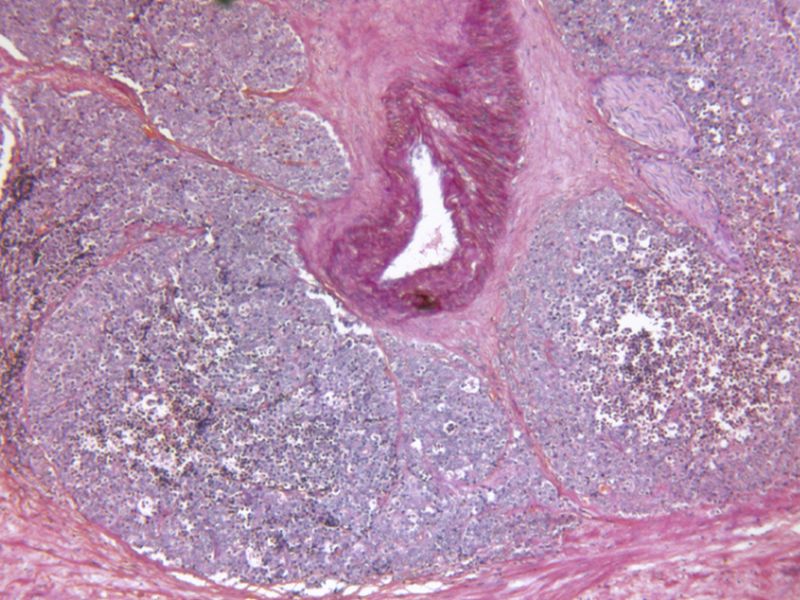 By Dennis Thompson
By Dennis Thompson
HealthDay Reporter
TUESDAY, May 22, 2018 (HealthDay News) — There’s good news for Americans in the war against cancer.
Cancer deaths continue to decline nationwide, according to the Annual Report to the Nation on the Status of Cancer.
But the report also points to one troubling trend — prostate cancer deaths are creeping up again after years of decline, suggesting that controversy over the best way to screen for the disease may have given it a chance to flourish.
Especially troubling is an increase in men diagnosed with late-stage prostate cancer that has spread to other organs.
“We are definitely losing ground,” said Dr. Serban Negoita, chief of the U.S. National Cancer Institute’s Data Quality, Analysis and Interpretation Branch. “We don’t want to have more people diagnosed at a distant stage, and we don’t want to have more people dying from prostate cancer.”
Overall, cancer diagnoses and cancer deaths continue to decline in the United States, said lead author Kathleen Cronin, a researcher with the U.S. National Cancer Institute.
These declines have been driven largely by improved treatments, prevention and screening in lung, colorectal and breast cancers, she said.
Overall cancer death rates are “decreasing for both men and women,” Cronin said. “So I think it is a positive message.”
Experts are, however, troubled by the prostate numbers. Screening for the disease has been controversial in the wake of clinical trials that revealed many men suffer erectile dysfunction and urinary incontinence after surgery or radiation therapy to treat a cancer that would not have killed them.
But earlier this month, the U.S. Preventive Services Task Force backed off its long-held hardline stance that no men receive prostate-specific antigen (PSA) screening for prostate cancer. The task force now recommends that men aged 55 to 69 decide for themselves whether to undergo a PSA test, after talking it over with their doctor.
Data from the Annual Report indicate that a reassessment of prostate cancer screening‘s value had been due.
Cases of prostate cancer that spread to other parts of the body increased from 7.8 new cases per 100,000 in 2010, to 9.2 new cases per 100,000 in 2014, the researchers found.
Further, prostate cancer death rates leveled off between 2013 and 2015, after two decades of continued decline, the report noted.
While concerns over the harms associated with prostate cancer treatment were warranted, these numbers show that a decline in screening may be allowing cancers to spread before they are caught, said Dr. Paolo Boffetta. He is associate director of global cancer with the Icahn School of Medicine at Mount Sinai in New York City.
“There was this big concern that probably pushed things a little bit too much in the other direction, and now we see that PSA testing even with some overdiagnosis has contributed to reducing mortality from prostate cancer,” Boffetta said.
The main report shows that, from 1999 to 2015, overall cancer death rates decreased by 1.8 percent per year among men, and by 1.4 percent per year among women.
Between 2011 and 2015, death rates fell for 11 of the 18 most common cancers in men, and for 14 of the 20 most common in women.
Much of the decrease can be attributed to the decline in smoking, Cronin said.
“I think it really reflects a decrease in smoking over the past five decades,” Cronin said. “But even though lung cancer is still decreasing, which is really great news, it still accounts for more cancer deaths than any other site. Smoking still accounts for probably half of cancer deaths.”
New guidelines for lung cancer screening of current and past smokers, using CT scans, could reduce deaths even more, Cronin said. However, those guidelines are still too recent to have affected these numbers.
Oral cancers also have continued to increase for both men and women, despite the availability of the human papillomavirus (HPV) vaccine. Most oral cancers are caused by HPV, which is spread through sexual contact.
“It will take time to see the effects of the vaccine in the population,” Boffetta said. “When the young generation that’s being vaccinated reaches the age when this cancer develops, in their 40s and 50s, then we’ll see the effect of the vaccine.”
The Annual Report also showed a continued increase in liver cancer, probably due to high rates of hepatitis C infection among baby boomers and the nation’s continuing obesity epidemic, Cronin said.
Obesity also has likely contributed to an increase in death rates from cancers of the uterus and pancreas, the report noted.
“There are cancers that have not been given enough priority, liver and pancreas in particular, that don’t go down,” Boffetta said. “They don’t receive enough attention from the government, from the public or from the different levels of the cancer community.”
The annual report is a collaborative effort of the U.S. National Cancer Institute, the U.S. Centers for Disease Control and Prevention, the American Cancer Society and the North American Association of Central Cancer Registries.
The report was published online May 22 in the journal Cancer.

Copyright © 2018 HealthDay. All rights reserved.
CONTINUE SCROLLING FOR NEXT NEWS ARTICLE
SOURCES: Serban Negoita, M.D., Dr.PH., chief, U.S. National Cancer Institute’s Data Quality, Analysis and Interpretation Branch; Kathleen Cronin, Ph.D., M.P.H, researcher, U.S. National Cancer Institute; Paolo Boffetta, M.D., M.P.H., associate director of global cancer, Icahn School of Medicine at Mount Sinai, New York City; May 22, 2018, Cancer, online







Leave a Reply